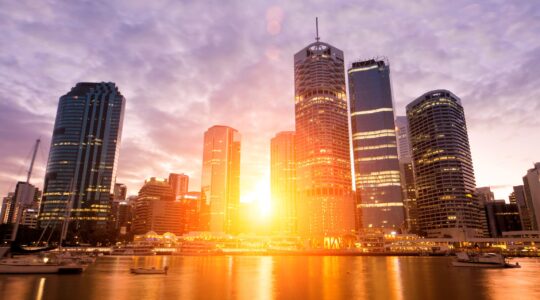By Susan Schwartz
The lipstick index may be losing its gloss after long being seen as an early indicator of tough economic times.
The index – which measures sales of small “treat” beauty products like lipstick – is being crushed, meaning it may no longer be the best way to judge what is ahead.
This is because consumers are moving towards moisturisers and fragrances as the world becomes more casual.
In tough economic times people are also more inclined to treat themselves with experiences rather than buy “stuff.”
Unlike previous periods in history, consumers are placing a higher value on “doing” rather than “having” when the cost of living bites.
Estee Lauder’s son Leonard first observed the rise in cosmetic sales in the aftermath of the 9-11 terrorist attacks in 2001, and again during the global financial crisis in 2008.
Lauder coined the term “lipstick index” to reflect these increases in sales when times are tough – prompting people to purchase a new lipstick as an affordable luxury instead of other, more expensive items like clothing and accessories.
The cost of living crisis and trends like underconsumption core have meant makeup is now being added to the long list of “things” tying us down.
Consumer fatigue has customers reaching for experiences instead.
And makeup brands are suffering.
The slide has hit older, established brands such as Estee Lauder whose latest figures show a steeper than anticipated slump in sales this year.
Joining Lauder is Shiseido whose earnings dipped 8.5 percent, and Coty which will cut 700 jobs (5 percent of its workforce) across the globe.
The trend has also impacted once hot newcomers like Drunk Elephant whose sales have slid a staggering 65 percent.
Covid lockdowns and Zoom calls mean that makeup is taking a backstage to skincare and fragrance. The world has become less dressed up, and more dressed down. There’s less need to wear makeup if you work from home, and no one will care what you look like if you slap on a face mask while trying to smash out the latest company report. Of course those around you will still care what you smell like.
Skincare and fragrance are where the growth lies, according to a McKinsey report released in 2023. The global skincare market was worth $142.78 billion in 2024, and is projected to reach $214.02 billion by 2032, at an annual growth rate of 4.6 percent, according to SkyQuest Technology.
For instance, Japanese skincare brand Tacha continued its double-digit growth for the first quarter of 2025, according to manufacturer Unilever. Then there’s fine fragrance brand Amouage, which lifted sales by 48 percent, reporting $100 million in retail sales for its first-quarter earnings, with growth led by its owned boutiques and new US opportunities.
The reasons for the makeup slump are multi-factored.
There are the online third-party beauty retailers that cut prices lower than the recommended retailers via a murky network of grey market imports.There’s consumer fatigue in a fragmented market owned by social media influencers and challenged by new indie brands which have created a sheer wall of volume that is hard to sift through.
And then there’s competition for consumers who, after long lockdowns, have other priorities or are increasingly drawn to cultural experiences or events instead.
The Australian Bureau of Statistics data shows that spending on clothing, footwear, and accessories dropped by 2.5 percent in April 2024, compared to the previous year, and it has struggled to improve in 2025.








